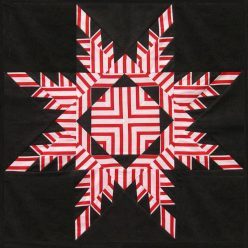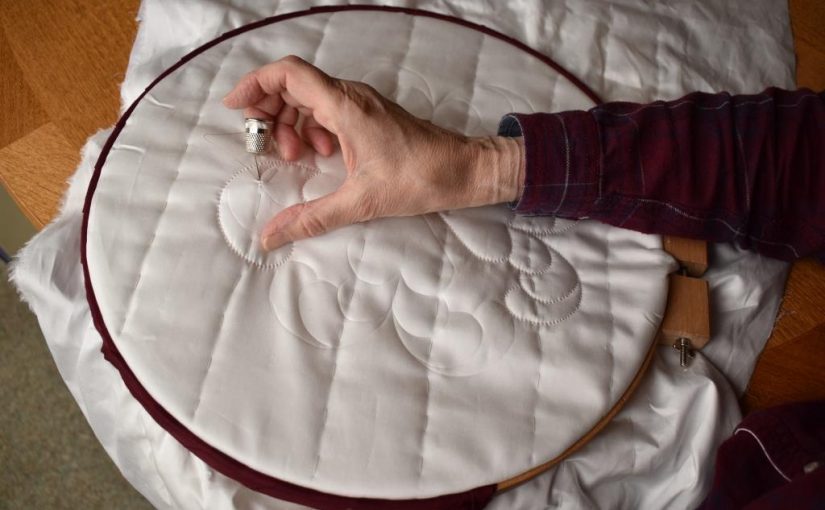Finally, having done all the preparation:
- chosen suitable fabric, wadding & thread
- selected a pleasing design
- transferred it onto the fabric using a suitable marker
- layered with wadding & backing
- put into a hoop
- found a betweens needle, and a good thimble that fits
we reach the actual quilting!
Cut a length of thread 12 – 15″ long. Run through beeswax if it isn’t quilting thread.
Thread your needle with the end that came off the reel first (this helps avoid twisting).
Tying a starting knot
Tie a knot in the freshly cut end of your thread. This knot will be buried inside the wadding, so you won’t see it in the completed piece. The ideal knot is big enough so that the thread won’t pull right through, so usually you need a slightly larger one than a simple, single knot.
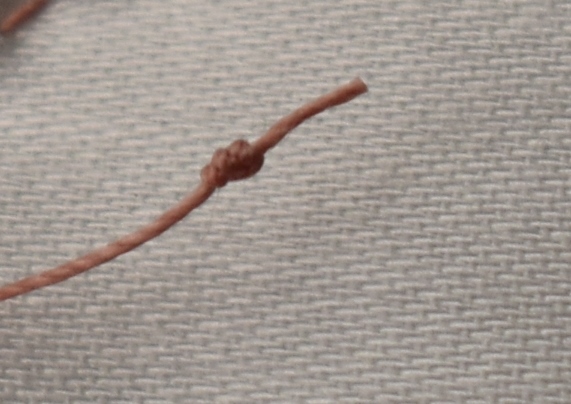
The short video demonstrates how to tie a suitable knot:
- Hold the needle in your right hand, and with your left hand, hold near the “tail” of the thread (reverse all this for left handers).
- Bring your hands together, and without letting go of anything, grasp the very end of the thread with the finger and thumb of the right hand, so that the thread end is held against the needle.
- With the left hand, wind the thread several times around the needle.
- Slide this coil of thread down the needle until it also can be grasped by the right finger and thumb.
- Holding this coil against the needle with the right hand, pull the needle through using the left hand.
- You will find that the coil forms a neat but substantial knot at the end of the thread.
Popping the Knot
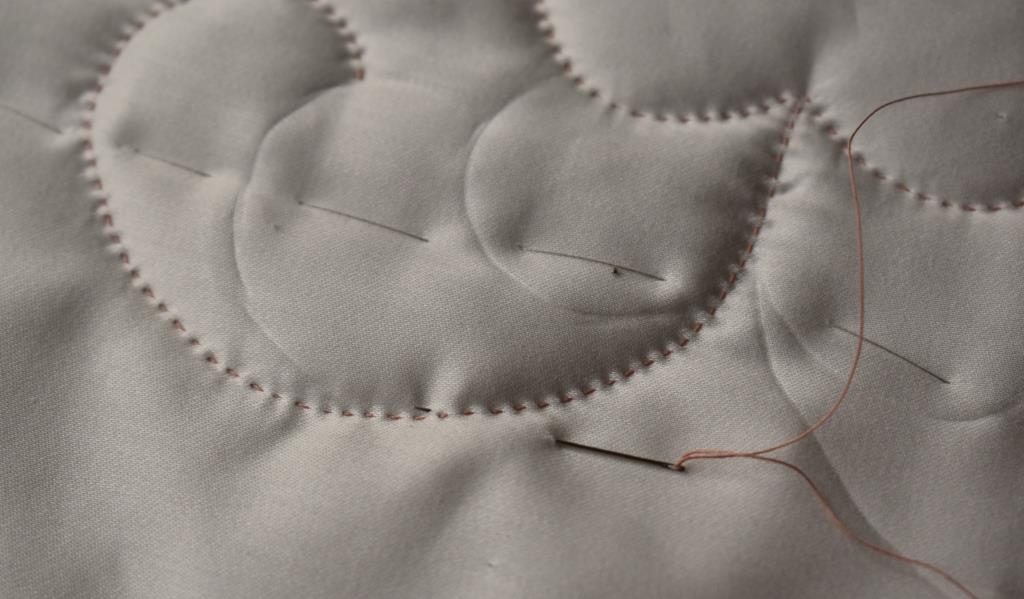
Insert the needle a short distance away from the start of the marked stitching line, and come up at the start of the line.
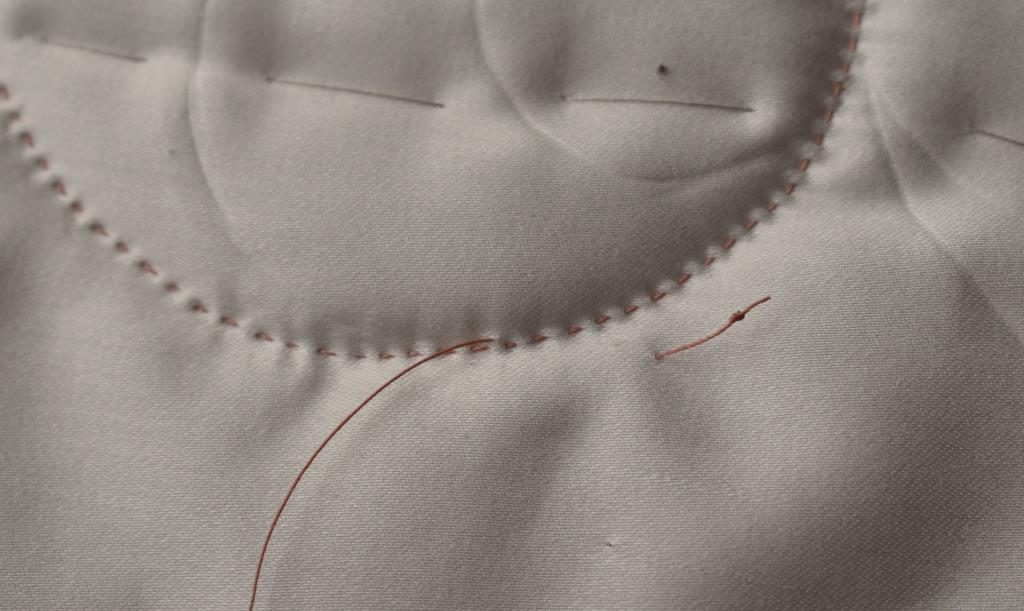
Pull through so that the knot rests on the surface of the fabric
Unless your fabric is quite loosely woven, it can be difficult to get the knot to pull through the surface fabric without damaging it.
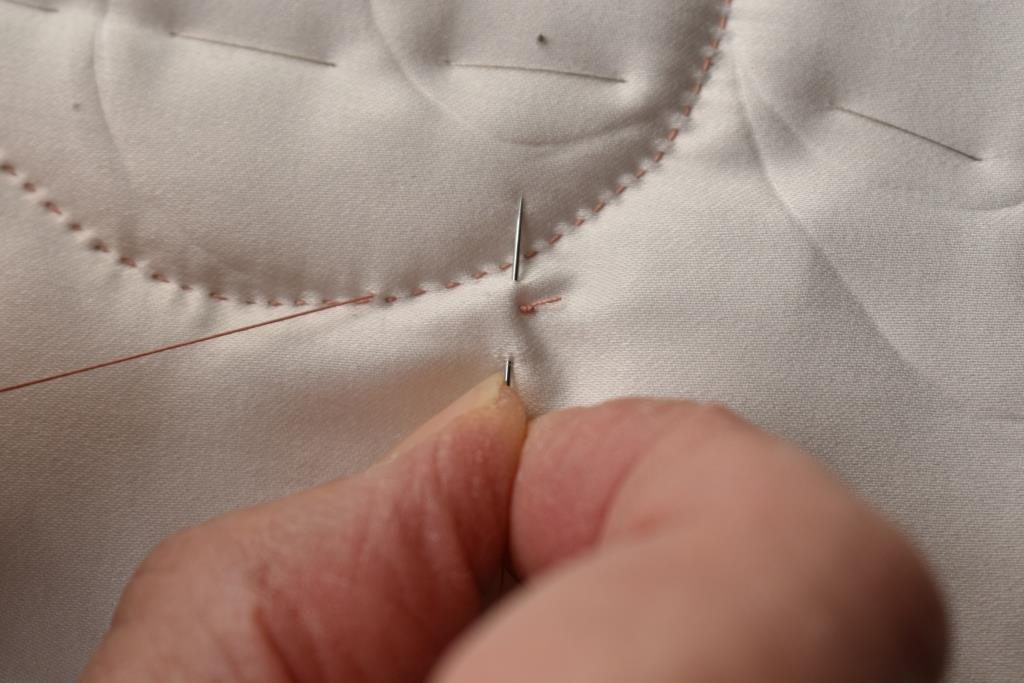
A good trick is to put your needle in and out of the top fabric only, just in front of the knot, going above the hidden part of the thread. Hold this firmly – it gives you something to pull against, whilst spreading the pressure.
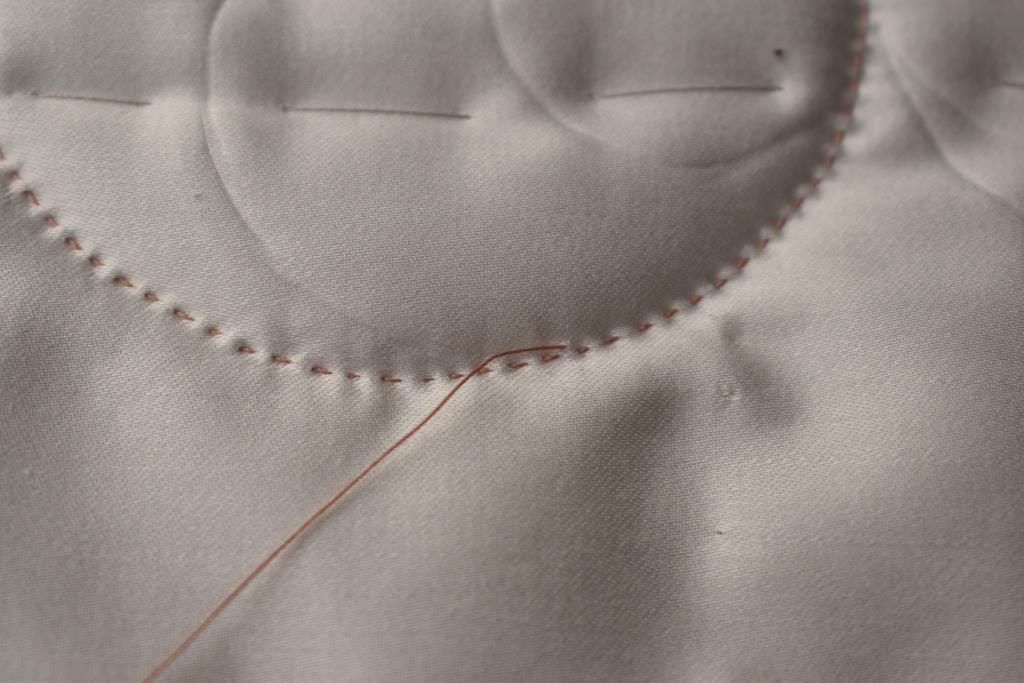
Pull to “pop the knot” into the wadding.
This short video demonstrates “popping the knot”:
If you notice that your fabric pulls a thread from across a wider area, or shows the knot hole too much when popping the knot, remember that it is just as easy to turn your hoop over for a moment, and start/stop each stitching line on the back.
The quilting stitch
Now, using the rocking stitch, quilt along the first line. This short video shows how it’s done.
You will need quite a bit of practice to get your stitches small and even. The picture below shows the first quilt I ever hand quilted – with about 7 stitches to the inch (counting front and back). I now manage about 17 stitches to the inch – but remember that it is not a competition!
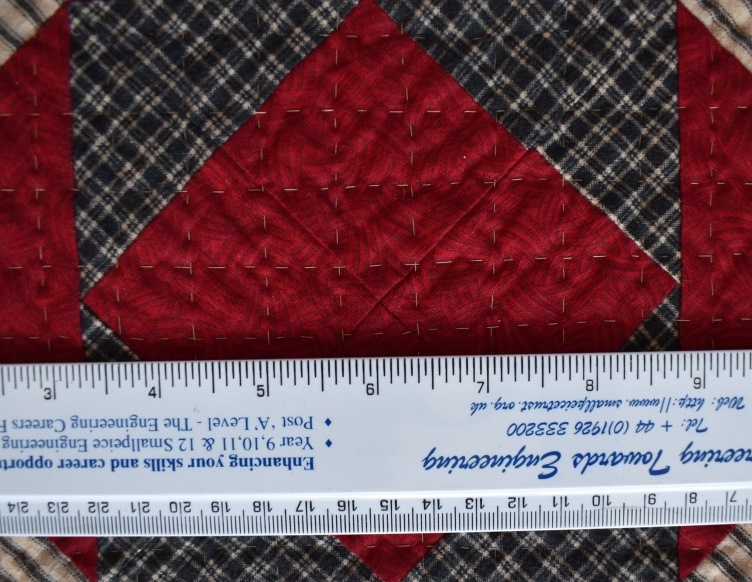
Just try to settle into the rhythm and your stitches will gradually improve. Aim for even stitches, rather than small – it will look better.
Traveling
When you get to the end of the first line, you will probably have plenty of thread left on your needle, so there is no need to fasten off yet. In hand quilting, it is easy to “travel” through the wadding to the next place where you want to stitch, providing that it is not much more than an inch away.
Just insert the needle through the top fabric only, and come out at the next starting point.
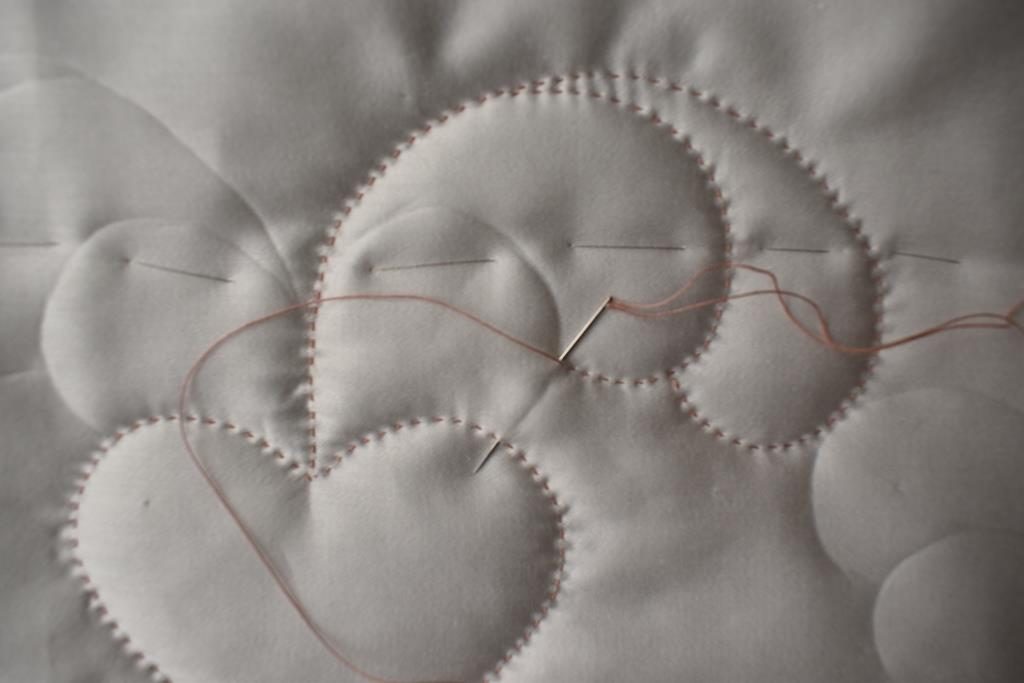
On the quilt above, I could have turned the corner, and carried on stitching, but this would have left part of the line unstitched. Plan your quilting to stitch continuous lines wherever possible, with the shortest possible “travels”.
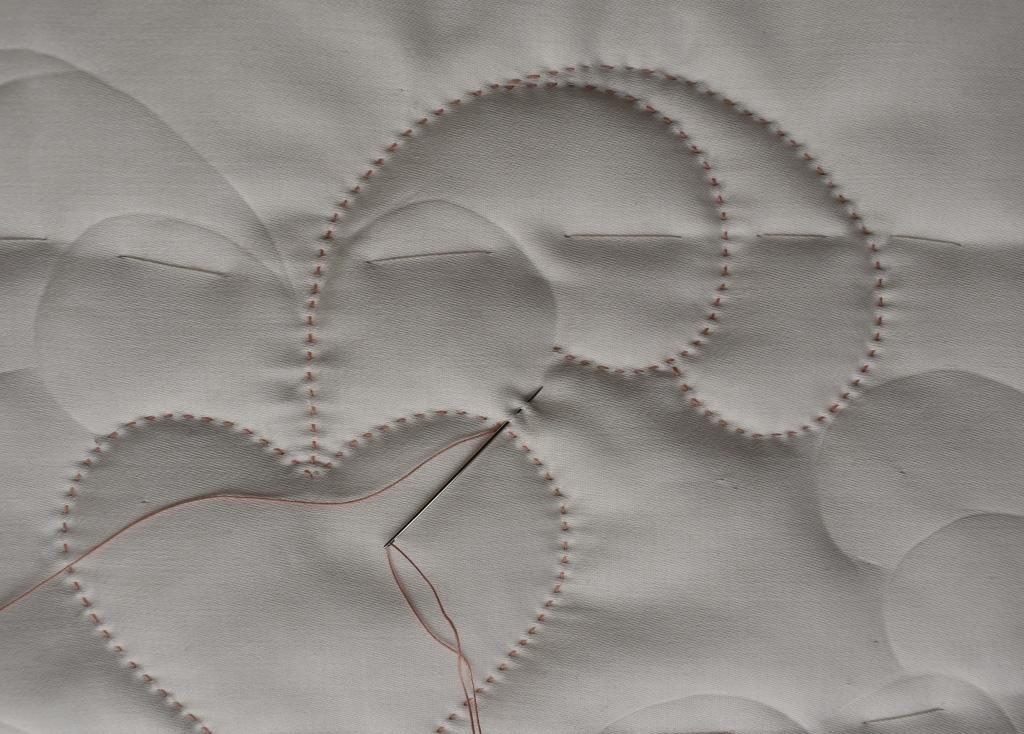
Watch the “traveling” technique on this short video:
Sometimes, your needle may be too short to travel in one step to the next desired starting point. If so, bring up the tip of the needle at the half way point, but only pull up part of the needle. Swivel round the eye end underneath the fabric, and then push on the pointed end of the needle (using a thimble!) so that the eye end comes out at the desired position.
This swivel technique may sound a bit strange, but it works! I would not recommend attempting to travel a larger distance however – finish off and restart.
Finishing a thread
When you have less than 4″ of thread left, or don’t have enough for the next section of the design, you need to finish off invisibly, by making another knot, and burying it in the wadding.
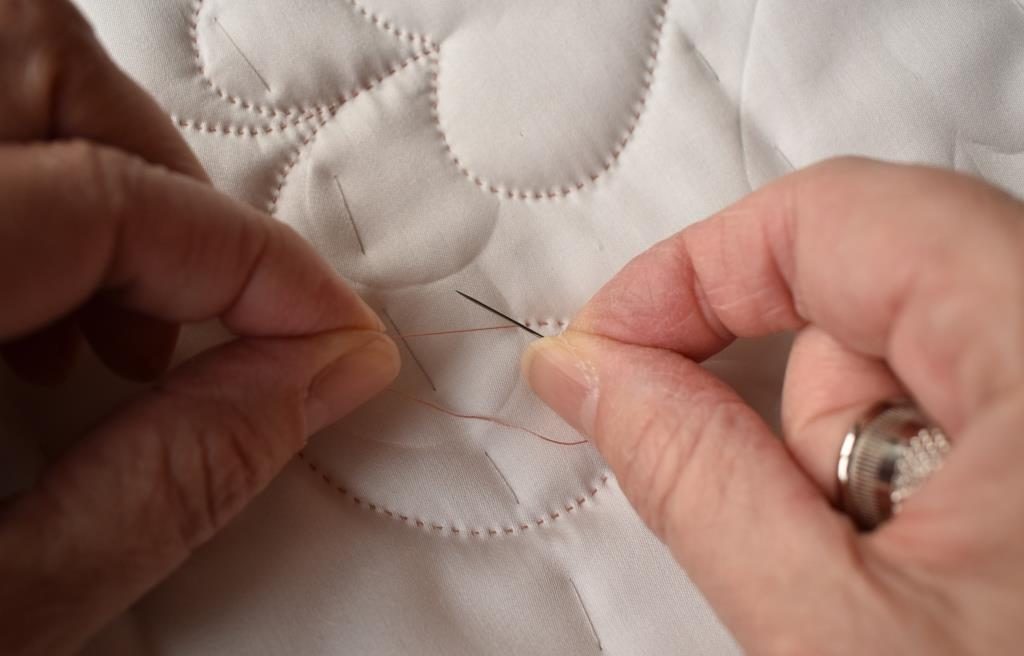
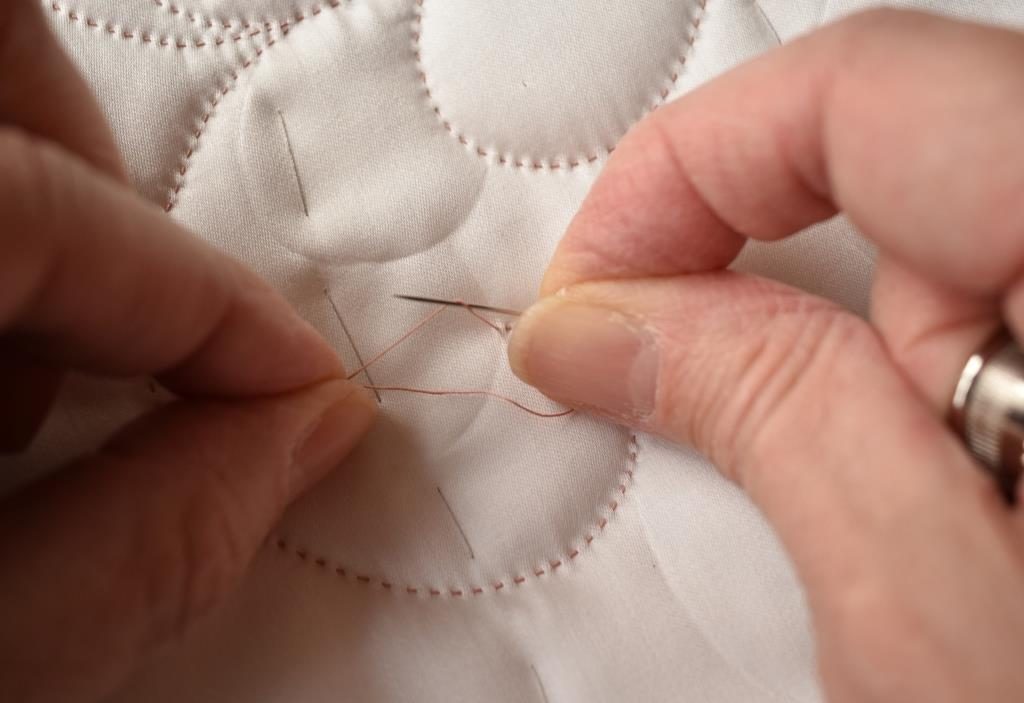
Now you need to make two or three turns of the thread around the needle – its actually easiest to hold the thread taut and manipulate the needle.
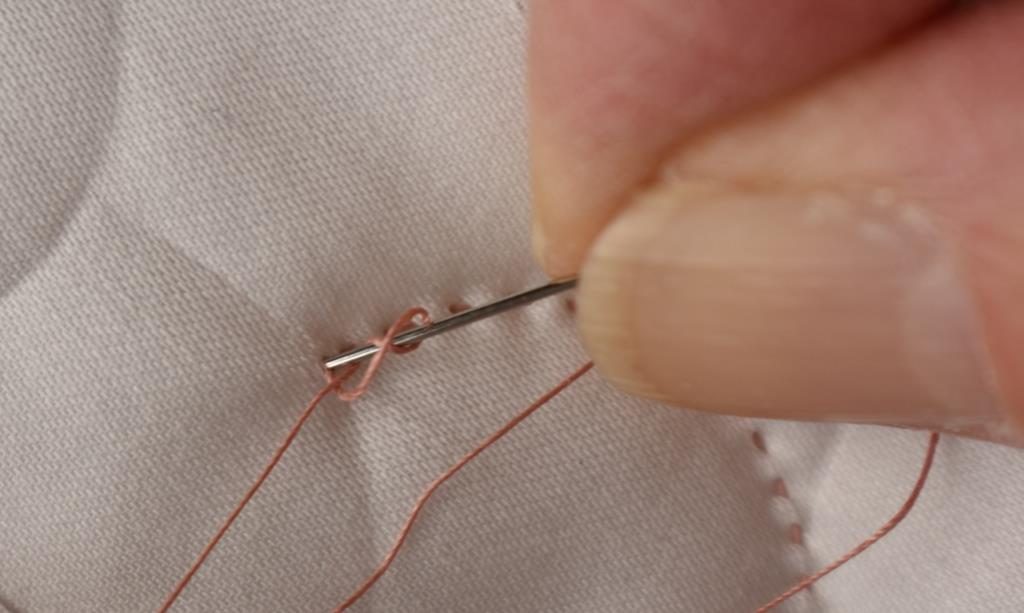
Then poke the tip of the needle into the end of the stitching line, just through the top fabric into the wadding, being careful not to let the coils fall off.
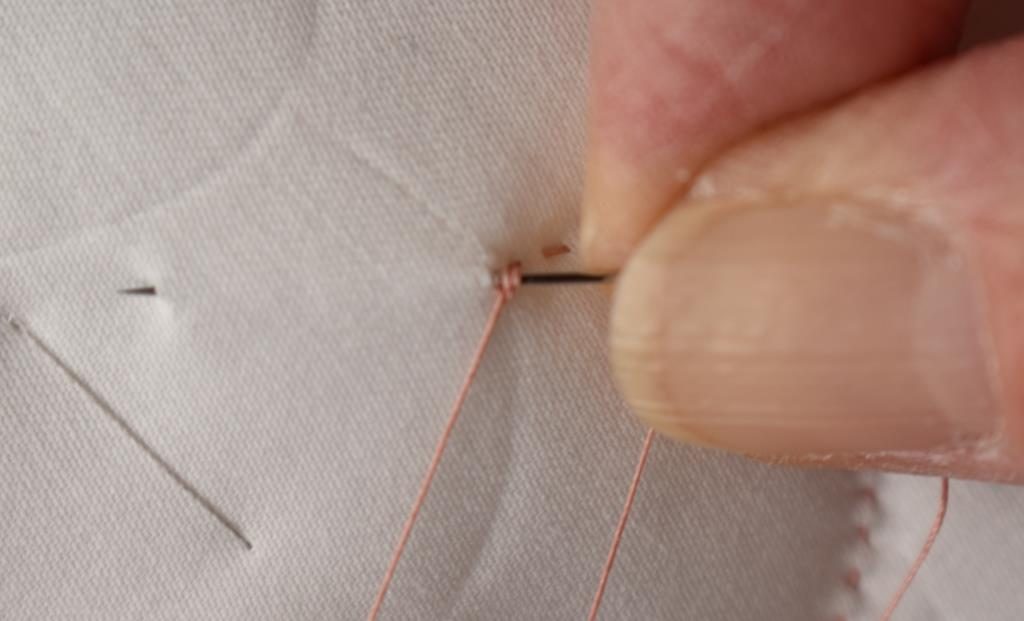
Pull the thread coils tight around the needle, and then push the needle through the wadding, coming out an inch or so ahead.
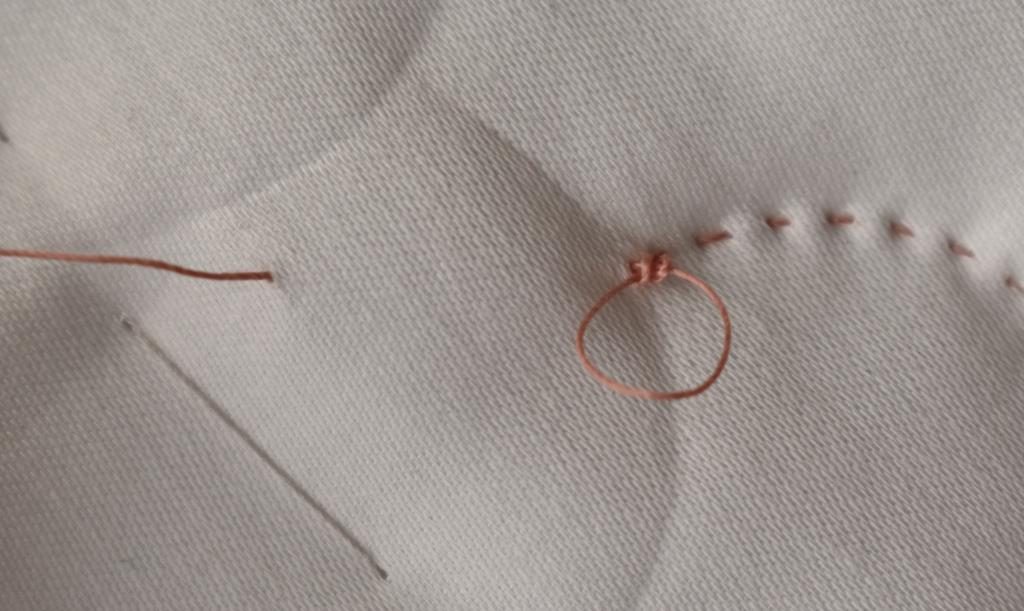
Pull the needle through carefully until a tight knot forms.
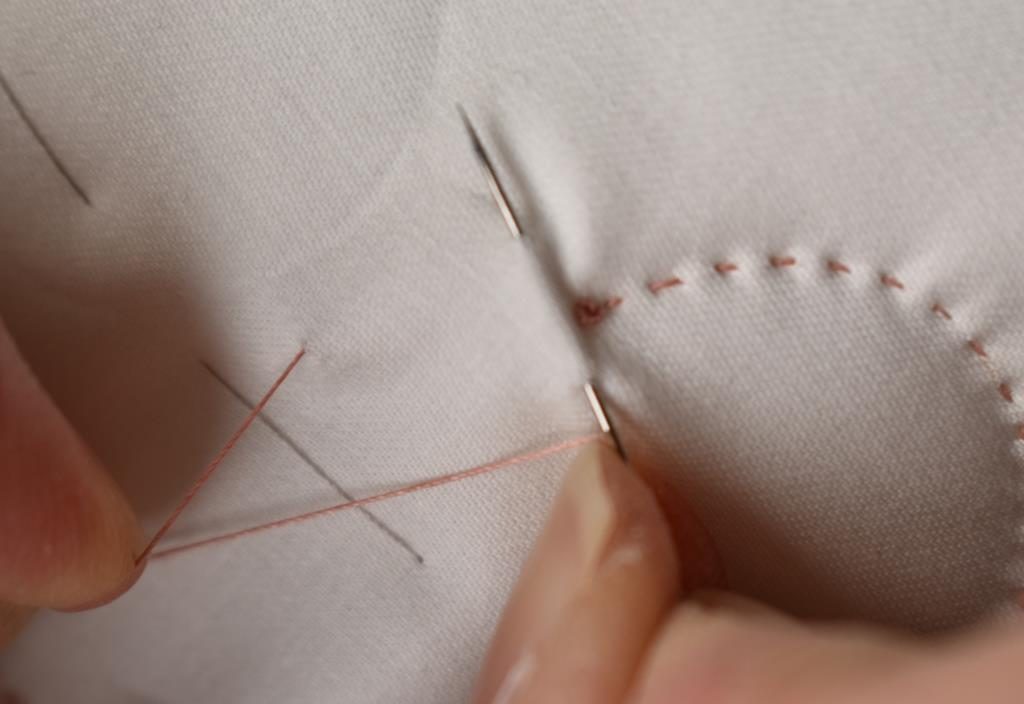
Using the needle at right angles to the thread to pull against, “pop the knot” through the top fabric.
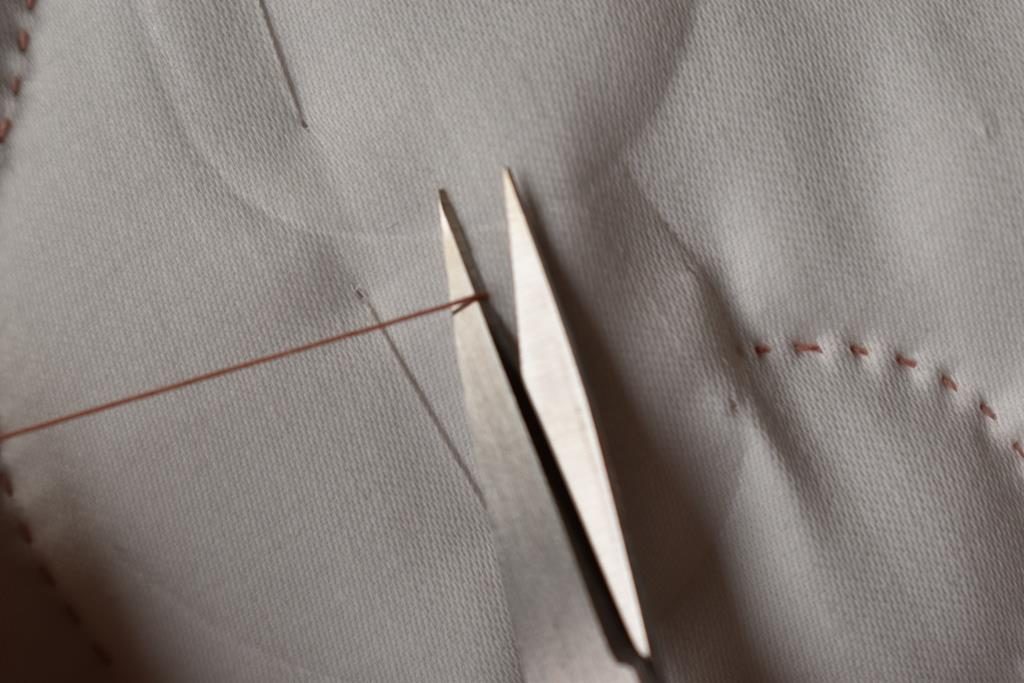
Pull the thread slightly, and snip off. The end should spring back into the wadding – if it doesn’t, poke a needle into the wadding horizontally, and swoosh it sideways to pull the thread end under.
Here is a final video, which shows how to make and “pop” the finishing knot:
Continue stitching all the sections of the design like this. You won’t be able to stitch close to the hoop edge, so if necessary, leave a threaded needle in the fabric after stitching part of a motif, and use it again when you have moved the hoop.
Quilting over patchwork
Adding quilting to a patchwork top is done in the same way as on the wholecloth quilt shown above. However, it’s a good idea to plan the placing of your quilting lines to avoid the bulky seam junctions where possible, as they are much harder to stitch through. See the Quilting Design page for some ideas.
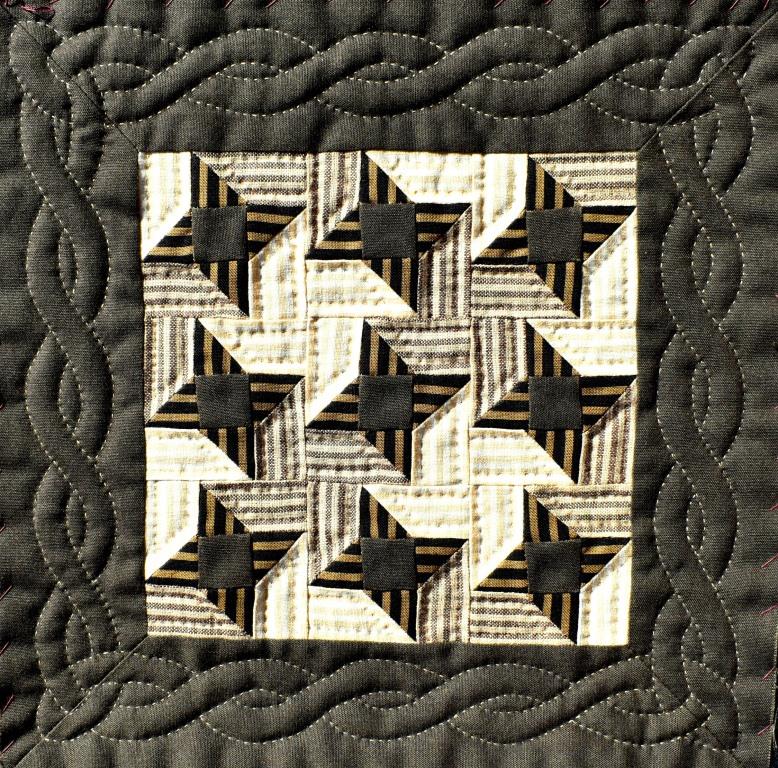
If you can’t avoid stitching through bulky joins, you will probably find that you can’t use the rocking stitch in those areas. Instead, you will need to stab stitch, pushing the needle down and pulling through, and then up in a separate stitch. It’s more difficult to get the spacing and stitch length even with stab stitching though.
Quilting Basics
This page is the last part of a set about Quilting Basics.
If you would like to try out hand quilting on a small project, the Feathered Hearts download pattern from my online Shop would be suitable. To become more experienced, you might like to try the Amish Squares, which has a simple curved line pattern in the central area, but a more elaborate border quilting design.
Once you feel you are ready to tackle a proper wholecloth project, why not have a look at Cream of Wales?
Click on the links to discover more about the materials and techniques used in hand quilting:
